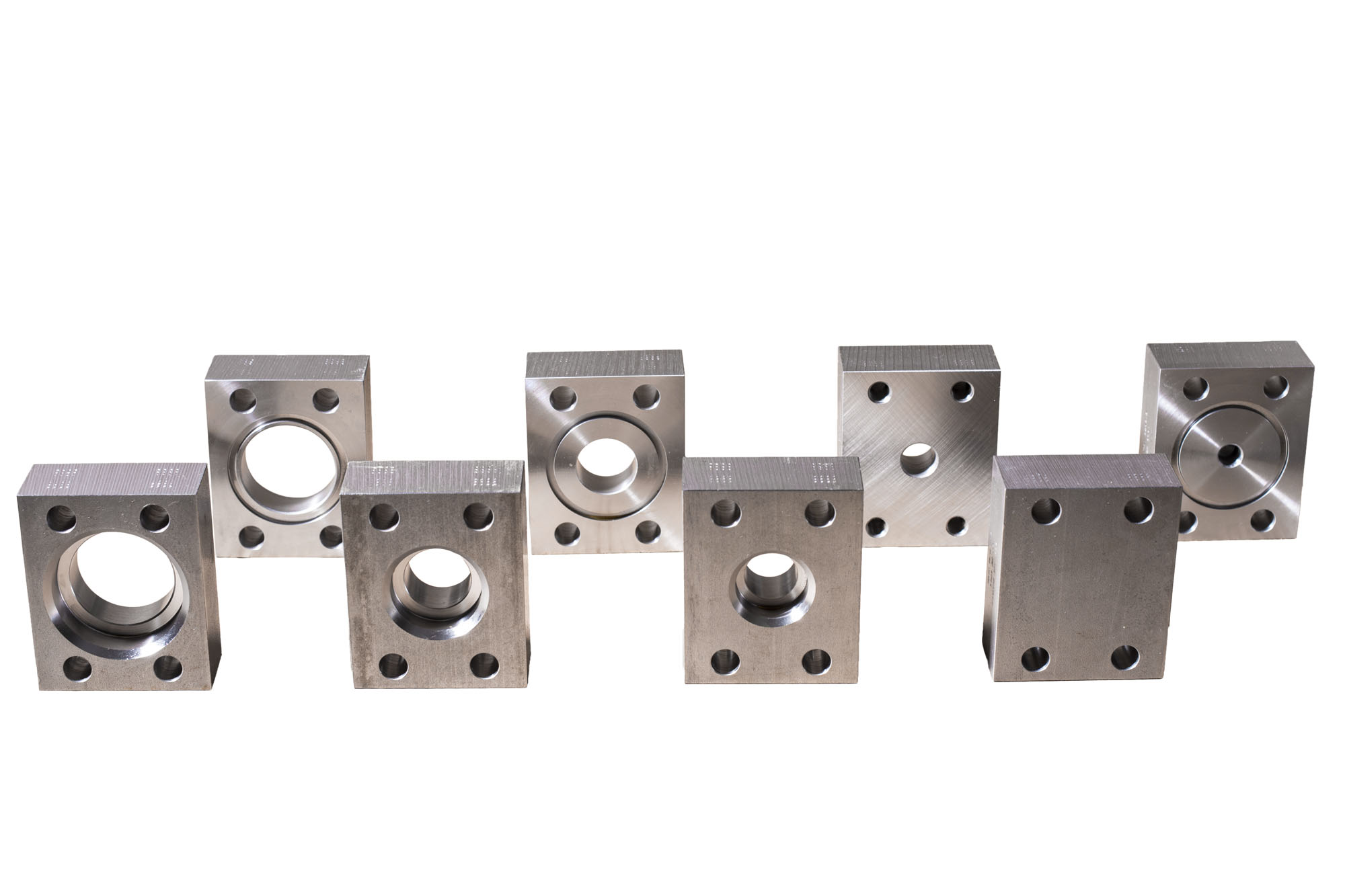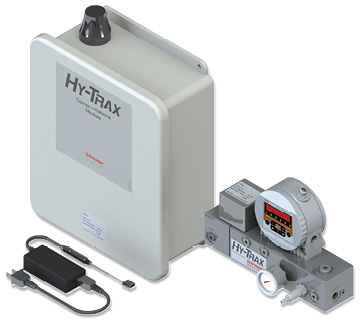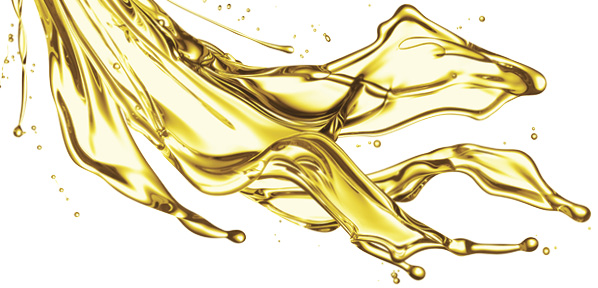A Look at Uncommon Hydraulic Connectors
Robert Mackey, General Manager, MAIN Manufacturing Products.
Numerous issues can arise when installing or repairing hydraulic presses. Because the expense of downtime is so great, decisions must be made quickly, and because safety is so important, those decisions must be right. Knowing the options that are readily available can make all the difference.
This article looks at less-common hydraulic adapters available from multiple suppliers. Knowing these connectors are available can decrease the cost of installations and repairs and increase the ease and sophistication of an installation. The connectors include: reducing flanges; gauge port adapters, gauge port options, and tees; flange adapters; flanged elbows and tees; gender changers; and miscellaneous changes and adaptions of standard parts.
Reducing flanges
Reducing flanges are readily available and can be used to optimize flow rate in a system. Many times, standardized components accommodate multiple flow rates using the same port size; an example of this is pumps. It is common to have different internal configurations covering several flow rates with the same housing port size. Flow rates can also be reduced due to flow diversion to various subsystems. Reducing flanges reduce the number of fittings, minimizing cost, maintenance, and leak points. They also lower the size and cost of fittings downstream. Reducing flanges make the connection look professional and less like a Christmas tree. Many times, reducing flanges do not cost more than nonreducing connectors.

Gauge port adapters, gauge port options, and tees
Gauge ports are helpful when trying to troubleshoot systems or determine when to replace a filter. Before working on components, the U.S. Occupational Safety and Health Administration requires that an operator know that the system is de-energized. Many companies monitor the system’s fluid condition to determine wear and replacement needs. Draining the system is sometimes required as well. Pilot pressures or an additional line are also sometimes needed. Adding gauge ports in flanges or gauge port adapters are a smart way to accomplish these tasks. If specified at the time of the original order, a gauge port can be added to most flanges very inexpensively, and many times they are in stock. If needed later, a gauge port adapter may be the easiest way to go. A gauge port adapter is a component that “sandwiches” between halves of a flange connection. It may add an inch (25 mm) to the spacing, and generally the port is in the side of the flange. Gauge ports can be NPTF, straight threads, BSPP, or other ports and come in various sizes.
Gauge port adapters also allow gauge ports to be added to hose lines. As port size increases, the component becomes, in effect, a reducing tee. Alternatives like thread-o-lets are cheaper to buy later, but they are expensive to install due to cleaning requirements and the cost of welding.
Flange adapters
Many components have square mounting patterns for their flanges. This includes hydraulic mounting pads to German (ISO 6164), Japanese (JIS), or some special company standards. Flanges for these patterns are easy to get, but if you want to convert to a split-flange (SAE) hose connection, it can be difficult. Square pattern to SAE pattern flange adapters can easily accomplish this task. The flange adapter has a set of counter-bored through-holes in the square pattern and a set of tapped holes in an SAE pattern. You can get a hose with SAE flanged heads almost anywhere in the world. Hoses help reduce shock in the system but do need to be changed, while a pipe may never need to be changed. Flange adapters are also used to convert between SAE J518/1 (code 61) and SAE J518/2 (code 62) patterns. This can be necessary when a pump or other component is replaced or when the line sizes of a code 62 system are reduced enough to take advantage of the increase in pressure rating of the less expensive code 61 components.

Several years ago, flange adapters helped reduce cost and weight in a large multiple-story-high hydraulic press project. The press design specified a large steel manifold approximately 1.4 meters (4 feet) by 2.8 meters (8 feet) and 100-150 mm (4-6 inches) deep. The spec was 100-150 mm because if the ports were oriented properly for the lines to make a 90° bend, the entire manifold needed to be 150 mm. By using flange adapters to rotate the rectangular flange pattern, the manifold only needed to be 100 mm deep, resulting in a huge reduction in cost and weight. The same issue arises in small systems where spacing requires a compact solution.
Flange adapters can also be used to reduce the size of a connection. They work like reducing flanges but for hose connections. The advantage is that the hose connection can be replaced easily because it only needs standard components. Another nice feature is that the surface of the flange adapter that is exposed when changing hoses is the ground surface, which sometimes can be reground to correct damage; however, check with the manufacturer before regrinding to determine if it can be done safely due to thinning of the component and also reducing of the thread depth. Flange adapters are sometimes used with solid flanges; if the flange needs to be replaced, a standard flange can be used.
As a three-piece connection, flange adapters can increase the pad size. The three pieces consist of a flange, a 3/8-to-1/2-inch thick plate, and a mounting kit. The flange is bolted to the existing smaller pad with the mounting kit, and the plate is sandwiched between the larger component and the flange. Sometimes longer screws are needed to safely mount the larger component.
Some contractors and facilities require all-imperial or all-metric screws. There are flange adapters that can accommodate both imperial and metric mounting patterns. Flange adapters solve a lot of problems and have a number of different configurations.
Flanged elbows and tees
While flange adapters spin the pad pattern, flanged elbows rotate the axis of the pad. For example, space around a hydraulic press can be very tight after it is installed, even though the press is very large. Flanged elbows rotate flow with the tightest of turns. They are a little more resilient to shock by having more material than a 90° flange head. Flange elbows also allow the connection to be disconnected from a different direction, allowing access to the line even if another component or line is next to the flanged elbow. An example of this occurred with an installation of multiple hydraulic workstations fed by a central hydraulic system. The facility ran a 3-inch hydraulic line in a trench. Using flanged elbows and tees, they were able to use a trench 9 inches wide by 12 inches deep. The connections to the workstations were from the top of the line, and blind flanges were used to block connections. When the available space makes it difficult to service an installation, consider flanged elbows and tees. They are available in both O-ring and flat-faced connections. The most often used version has an O-ring on one pad and a perpendicular flat-faced pad.

Connector blocks
A connector block allows two flange head hoses to be connected. This is an inline fitting that has two tapped, flat-faced connections. We have seen these used commonly in two situations. The first is to make the connection through a bulkhead; the block is welded into the bulkhead and the hoses are attached on either side. Connector blocks can also be used to join hoses. A construction equipment manufacturer used connector blocks to help standardize hose lengths. It allowed a standard set of hoses to be kept as replacement kits, increasing equipment uptime. If secured in place, a connector block can be used to pressurize or drain a hydraulic system.
Gender changers
On big projects, multiple contractors are often used. This can result in miscommunication and mistakes. Remember that the connection is made by an O-ring and a flat-faced flange. The connection point is a convenient place to break a project between contractors. A common problem is both sides of the connection have the same gender, either both O-ring or both flat-faced. Gender changers have either both flat-face or both O-ring faces. They are thin from 7 mm (1/4 inch) to 12 mm (1/2 inch). By knowing that gender changers exist, you can ease tensions among multiple contractors quickly.

MAIN Manufacturing has started making a set of products called saddle-weld flanges that can solve some of the same situations that a flanged tee does. One end of the connections has a flat-face flange and the other end has a special contour that looks like a saddle, hence the name. It is sized based on the diameter of the pipe to which it is attached. Installation involves drilling a hole into the pipe and preparing the area for welding. The connector contour partially wraps around the pipe and is welded into place around the contour. A flange pad is now 90° to the axis of the pipe.
This article has covered a number of less-common but readily available connectors. Knowing these connectors are available can decrease the cost of installations and repairs and increase the ease and sophistication of the installation.
For more information, visit https://mainmanufacturing.com/.







